
Wine Culture and Information since 2002 - Volume 22
 Wine Culture and Information since 2002 - Volume 22 |
|
Issue 56, October 2007 |
Contents |
|
|
Comparing BarbarescoProduced with Nebbiolo grape, Barbaresco is one of the great protagonists of wines from Piedmont region, belonging to the noble family of Langhe's red wines |
|
Whenever you think about Nebbiolo, you always think at least about three things: the grape having the same name, Piedmont's Langhe area and great red wines, robust, noble and of character. Indeed, among the many expressions of Italian enology, wines produced with Nebbiolo grape represent a very important part, wines which contribute, undoubtedly, to the noble image of Italian enology in the world. Whether once the most frequent association with Nebbiolo grape certainly was Barolo, today the noble wine of Langhe shares this notoriety with other wines, such as Valtellina Superiore and Barbaresco. As for Barolo and Barbaresco - the two indisputable protagonists of Langhe - despite the production areas are separated only by few kilometers one from each other, the two wines have completely different characters, although having common characteristics. If it is true Barolo is generally considered a robust and “harsh” wine, Barbaresco expresses more “gentle” qualities, although having an undoubtedly robust structure. These considerations have of course a pretty “generic” and “universally” known character, however it should be remembered in the vast scene of Barbaresco and Barolo there are many exceptions to this “rule”. This means it is not rare to find a more “gentle” Barolo and a “harsher” Barbaresco. One of the main factors determining this character is represented by tannins and their astringency, generally being more pronounced in Barolo. Also in Barbaresco it is possible to find remarkable differences in the astringency of tannins, a factor which is mainly determined by the area from which are cultivated vineyards and their exposition.
|
|
In both productive areas of Barolo and Barbaresco - the same can generally be said for viticulture and wine making of Piedmont - particular attention is paid on the cru concept. Thanks to the studies and researches done by Renato Ratti, in the 1980s was in fact possible to create a map of “historical” areas of Barolo and Barbaresco - as a matter of fact, the crus - by also studying the characteristics of each area. The tradition of Langhe is mainly based on the production of wines made of grapes cultivated in specific areas, by keeping every “fraction” separated from the others, therefore obtaining wines with absolutely personal qualities. For this reason in the labels of Barolo and Barbaresco are found, in most of the cases, the name of the vineyard from which they are from. The production of Barbaresco is made in three villages: Barbaresco - from which it takes its name - Neive, Treiso and part of the village of San Rocco Senodelvio. Among the most common crus are mentioned Asili, Montefico, Montestefano and Rabajà at Barbaresco; Albesani and Gallina at Neive; Pajorè at Treiso.
Barbaresco is a wine which - according to the production disciplinary - must be produced with Nebbiolo grape in the “Michet”, “Lampia” and “Rosè” varieties, must be aged for at least two years, of which one in cask, or at least four years for the “reserve” style. Barbaresco can be aged both in oak and chestnut wood casks, and it is frequently commercialized in the “albeisa” bottle, typical in the Langhe area. The first wine of our comparative tasting is Castello di Neive's Barbaresco Santo Stefano, aged for 18 months in cask. The second wine is Sottimano's Barbaresco Cottà, also in this case aged for 18 months, however - as opposed to the previous wine - the producer chose the barrique instead of the cask. The third wine of our comparative tasting is Bruno Rocca's Barbaresco Rabajà, aged for 18 months in cask. The three wines will be served at the temperature of 18° C (65° F) and for the tasting will be used - as usual - three ISO glasses.
|
||||||||
|
Nebbiolo is a grape rich in polyphenolic substances, however its coloring capacity is pretty modest. For this reason wines produced with Nebbiolo - including Barbaresco - will be characterized by pretty high transparencies therefore making possible to see an object behind the glass. No matter of this, there are however exceptions in which the transparency of Nebbiolo, and of Barbaresco, is pretty low; a result which can be obtained thanks to specific wine making techniques. As for the color, Barbaresco shows in its youth an intense and brilliant ruby red color, whereas nuances will show evident garnet red hues, sometimes brick red, also during the first years of age. The evolution of the nuances will show in few years an evident brick red color, whereas the color of the wine will take some years in order to show a garnet red color which will in turn become brick red. The first wine we will examine is Castello di Neive's Barbaresco Santo Stefano. By holding the glass tilted over a white surface, we will observe the color, at the base of the liquid mass, and nuances, towards the opening of the glass. The color of this first wine is pale and brilliant ruby red, whereas in the nuance can be already observed an evident brick red color. Let's now pass to the evaluation of the second wine Sottimano's Barbaresco Cottà. Also the color of this second Barbaresco is intense ruby red, deeper than the previous wine, and the nuance shows an evident garnet red color. The third wine of our comparative tasting - Bruno Rocca's Barbaresco Rabajà - shows an evident brilliant ruby red color with nuances of brick red, similar to the first wine. It should be noticed the transparency of the three wines, pretty moderate and coherent with Nebbiolo grape, something very different from other wines, such as, for example, Amarone or Cabernet Sauvignon.
|
|
Wines produced with Nebbiolo are generally characterized by a pretty elegant and “noble” aromatic profile, in which the gentle aromas of fruit and flowers will join the complex aromas given by time. Also in Barbaresco will be found all these qualities, however the impact of tertiary aromatic qualities will depend, of course, both on the type and volume of cask used for aging, as well as on time. Despite the impact of wood, in the aromatic profile of Barbaresco will be perceived elegant aromas of fruit and flowers, of which the main representative ones are cherry, raspberry and plum for fruits, violet and rose for flowers. The development of tertiary aromas largely depends on the type of cask used for aging. In Barbaresco wines aged in barrique will be the vanilla aroma to prevail over the other ones, whereas in wines aged in cask, the aroma of vanilla will be less “intrusive” in favor of licorice aroma. Thanks to the quality of Nebbiolo, Barbaresco can age for many years, therefore in the course of its evolution, the development of tertiary aromas will be pretty complex. We will begin the evaluation of aromas from Castello di Neive's Barbaresco Santo Stefano. By holding the glass in vertical position and without swirling, we will proceed with the first smell which will allow the perception of opening aromas, made of lighter aromatic substances which need a small quantity oxygen to reveal themselves. From the glass will be perceived aromas of cherry and violet, an opening which can be considered very typical both for Nebbiolo and Barbaresco. We will now proceed by swirling the glass in order to favor the oxygenation of the wine and the subsequent development of “heavier” aromatic substances. The aromatic profile will be completed by raspberry and plum, whereas among flower aromas will be very evident the rose, also in this case a typical aroma both in Nebbiolo and Barbaresco. It will be then perceived aromas of vanilla, tobacco and licorice, as well as pleasing aromas of cinnamon, thyme and menthol. Let's now proceed with the second wine of our comparative tasting: Sottimano's Barbaresco Cottà. The opening of this second Barbaresco, as opposed to the previous wine, will be characterized by a more “robust” impact, in which will be perceived aromas of black cherry and plum. After having swirled the glass, we will perceive aromas of violet - one of the typical flowers in Nebbiolo and in Barbaresco - as well as blueberry, tobacco, licorice, vanilla, mace and menthol, followed by clean hints of coffee and cocoa. It should be noticed this is the only Barbaresco of the three to be aged in barrique, and it is therefore interesting to compare it with the previous wine. Let's now pass to the third wine which, like the first one, is aged in cask: Bruno Rocca's Barbaresco Rabajà. The opening aromas will be characterized by clean aromas of cherry, plum and violet, very typical of Nebbiolo. After having swirled the glass, we will now proceed with the second smell which will complete the aromatic profile with raspberry, rose, cinnamon, vanilla, tobacco, cocoa, leather and licorice, as well as an elegant balsamic aromas of menthol.
|
||||
|
Wines produced with Nebbiolo grape, and in particular Barolo, are generally defined as an iron fist in a velvety glove. Despite also Barbaresco is produced with Nebbiolo, this definition is not always valid for this wine. Barbaresco is usually known to have a higher “finesse” and “gentleness” than the other wines produced with Nebbiolo, however this aspect is not always true as also Barbaresco is a wine rich in tannins and having a full body. It will be astringency and body the first qualities to be perceived during the tasting of Barbaresco, although its astringency is generally “smoother” than other wines produced with Nebbiolo. Another typical gustatory quality of Barbaresco is its evident crispness which - together with tannins - requires a proper quantity of alcohol and aging time in cask in order to be balanced. The choice of wood containers - barrique or cask - will strongly influence roundness. In Barbaresco wines aged in barrique the acid component will in fact be less aggressive than wines aged in cask, while having at the same time a smoother and rounder character. We will begin the gustatory evaluation from Castello di Neive's Barbaresco Santo Stefano. Since the first sip it is possible to understand the nature of Barbaresco: a strong attack, however elegant and gentle, to which follows a round astringency and a refreshing crispness. After that will be clearly perceived the action of alcohol which will complete balance. Also the attack of the second wine - Sottimano's Barbaresco Cottà - is strong and full, with a pretty evident crispness, although in this case astringency seems to be “rounder” and “smoother”, mainly given by the aging in barrique. Also in this case the action of alcohol on balance is fundamental and producing an excellent result. Let's now pass to the third wine of our comparative tasting - Bruno Rocca's Barbaresco Rabajà - completely aged, like the first wine, in cask. In the attack of this wine can be clearly perceived an evident crispness, very pleasing and balanced, as well as a full body and the astringency of tannins, excellently balanced by alcohol. It should be noticed in all three wines the excellent correspondence to the nose, in particular the flavor of cherry and plum.
|
|
The elegance and nobility of Barbaresco is fully confirmed by the three wines of our comparative tasting, a character made not only of strength and body, but also by class and gentleness. The finish of Castello di Neive's Barbaresco Santo Stefano is very persistent with evident flavors of cherry and plum, a typical finish not only of Barbaresco but also of other wines produced with Nebbiolo grape. Also the finish of Sottimano's Barbaresco Cottà is very persistent with long and clean flavors of black cherry and plum, with even a fuller body. The finish of the last wine, Bruno Rocca's Barbaresco Rabajà, is not different from the previous wines, with a very long persistence and elegant flavors of cherry and plum, also in this case with a pretty high structure. It should be noticed in the final phases of the tasting the pleasing crispness which is perceived in the mouth after the wine has been swallowed, a quality typical in wines produced with Nebbiolo grape.
|
Wines of the Month |
|
|
|
Score legend Prices are to be considered as indicative. Prices may vary according to the country or the shop where wines are bought |
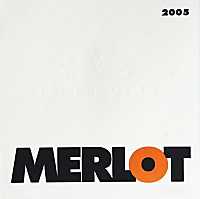
|
|
Sant'Antimo Merlot 2005 |
|
| Tenute Silvio Nardi (Tuscany, Italy) | |
| Grapes: Merlot | |
| Price: € 14.00 | Score: |
| The wine shows a brilliant ruby red color and nuances of ruby red, moderate transparency. The nose reveals intense, clean, pleasing and refined aromas that start with hints of black cherry, plum and black currant followed by aromas of blueberry, violet, vanilla, carob and menthol. The mouth has good correspondence to the nose, a slightly tannic attack and pleasing roundness, however balanced by alcohol, good body, intense flavors. The finish is persistent with flavors of black cherry and plum. Sant'Antimo Merlot ages for 8 months in barrique. | |
| Food Match: Broiled meat and barbecue, Stewed meat with mushrooms | |
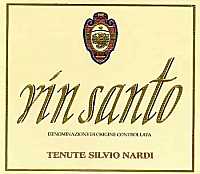
|
|
Val d'Arbia Vin Santo 1998 |
|
| Tenute Silvio Nardi (Tuscany, Italy) | |
| Grapes: Malvasia Bianca (60%), Trebbiano Toscano (40%) | |
| Price: € 16.00 - 50cl | Score: |
| This Vin Santo shows an intense amber yellow color and nuances of amber yellow, transparent. The nose denotes intense, clean, pleasing, refined and elegant aromas which start with hints of raisin, dried fig and apricot jams followed by aromas of honey, candied fruits, almond, nail polish, citrus fruit peel, sandal wood, tamarind and vanilla. The mouth has good correspondence to the nose, a sweet and smooth attack, however balanced by alcohol, full body, intense flavors, agreeable crispness. The finish is persistent with flavors of dried fig, honey, apricot jam and almond. This Vin Santo ferments and ages in “caratelli” barrels for at least 5 years. | |
| Food Match: Dried fruit tarts, Confectionery, Hard cheese | |
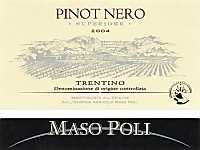
|
|
Trentino Superiore Pinot Nero 2004 |
|
| Maso Poli (Trentino, Italy) | |
| Grapes: Pinot Noir | |
| Price: € 18.00 | Score: |
| This Pinot Noir shows a brilliant ruby red color and nuances of garnet red, moderate transparency. The nose denotes intense, clean, pleasing and refined aromas that start with hints of cherry, raspberry and strawberry followed by aromas of blueberry, cyclamen, plum, vanilla and pink pepper. The mouth has good correspondence to the nose, a slightly tannic attack and pleasing crispness, however balanced by alcohol, good body, intense flavors. The finish is persistent with flavors of cherry, raspberry and plum. This wine ages in cask. | |
| Food Match: Stuffed pasta with mushrooms, Broiled meat and barbecue, Stewed meat | |
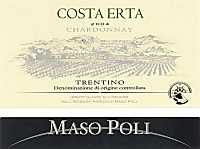
|
|
Trentino Chardonnay Costa Erta 2004 |
|
| Maso Poli (Trentino, Italy) | |
| Grapes: Chardonnay | |
| Price: € 15.00 | Score: |
| This Chardonnay shows a brilliant golden yellow color and nuances of golden yellow, very transparent. The nose reveals intense, clean, pleasing and refined aromas which start with hints of banana, apple and plum followed by aromas of pineapple, mango, hazelnut, vanilla, praline and grapefruit. The mouth has good correspondence to the nose, a crisp attack and pleasing roundness, however balanced by alcohol, good body, intense flavors. The finish is persistent with flavors of banana, hazelnut and plum. Trentino Chardonnay Costa Erta ferments and ages in barrique. | |
| Food Match: Stuffed pasta, Roasted fish, Roasted white meat | |

|
|
Trentino Superiore Müller Thurgau dei Settecento 2006 |
|
| Gaierhof (Trentino, Italy | |
| Grapes: Müller Thurgau | |
| Price: € 11.00 | Score: |
| This Müller Thurgau shows a brilliant greenish yellow color and nuances of greenish yellow, very transparent. The nose denotes intense, clean, pleasing and refined aromas that start with hints of peach, pear and pineapple followed by aromas of acacia, apple, broom and elder. The mouth has good correspondence to the nose, a crisp attack and however balanced by alcohol, good body, intense flavors, agreeable. The finish is persistent with flavors of peach, pear and pineapple. This wine ages in steel tanks. | |
| Food Match: Pasta and risotto with fish and crustaceans, Stewed fish, Sauteed white meat | |

|
|
Teroldego Rotaliano Riserva 2003 |
|
| Gaierhof (Trentino, Italy) | |
| Grapes: Teroldego | |
| Price: € 24.00 | Score: |
| This wine shows an intense ruby red color and nuances of ruby red, little transparency. The nose reveals intense, clean, pleasing and refined aromas that start with hints of black cherry, plum and blackberry followed by aromas of blueberry, violet, vanilla, tobacco, cocoa, cinnamon and menthol. The mouth has good correspondence to the nose, a tannic attack and however balanced by alcohol, good body, intense flavors, pleasing roundness. The finish is persistent with flavors of black cherry, plum and blackberry. Teroldego Rotaliano Riserva ages for 12 months in barrique, 12 months in cask and 12 months in bottle. | |
| Food Match: Roasted meat, Braised and stewed meat, Hard cheese | |
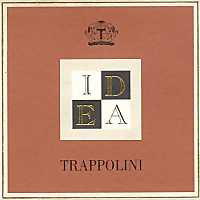
|
|
Idea 2006 |
|
| Trappolini (Latium, Italy) | |
| Grapes: Aleatico | |
| Price: € 11.00 - 50cl | Score: |
| Idea shows a brilliant ruby red color and nuances of ruby red, moderate transparency. The nose denotes intense, clean, pleasing and refined aromas that start with hints of blackberry, plum and black cherry followed by aromas of strawberry, raspberry, anise, rose, pink pepper and violet. The mouth has good correspondence to the nose, a sweet and slightly tannic attack, however balanced by alcohol, good body, intense flavors, agreeable roundness. The finish is persistent with flavors of blackberry, black cherry and raspberry. Idea ages in steel tanks. | |
| Food Match: Fruit desserts, Hard cheese | |
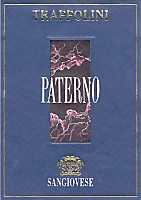
|
|
Paterno 2005 |
|
| Trappolini (Latium, Italy) | |
| Grapes: Sangiovese | |
| Price: € 12.00 | Score: |
| Paterno shows a brilliant ruby red color and nuances of ruby red, little transparency. The nose reveals intense, clean, pleasing and refined aromas that start with hints of plum, blackberry and violet followed by aromas of black cherry, vanilla, raspberry, tobacco, pink pepper, cocoa, mace and menthol. The mouth has good correspondence to the nose, a tannic attack and however balanced by alcohol, good body, intense flavors, agreeable roundness. The finish is persistent with flavors of black cherry, plum and blackberry. Paterno ages for 2 years in barrique followed by 6 months of aging in bottle. | |
| Food Match: Roasted meat, Stewed and braised meat, Hard cheese | |
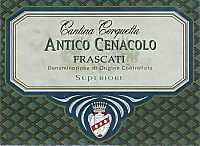
|
|
Frascati Superiore Antico Cenacolo 2006 |
|
| Cantina Cerquetta (Latium, Italy) | |
| Grapes: Malvasia di Candia (30%), Malvasia del Lazio (30%), Trebbiano Giallo (25%), Bombino, Bellone (10%), Greco Bianco (5%) | |
| Price: € 8.50 | Score: |
| This Frascati Superiore shows a brilliant straw yellow color and nuances of greenish yellow color, very transparent. The nose denotes intense, clean and pleasing aromas which start with hints of citrus fruits, apple and plum followed by aromas of pineapple, hawthorn and almond. The mouth has good correspondence to the nose, a crisp attack and however balanced by alcohol, good body, intense flavors, agreeable roundness. The finish is persistent with flavors of apple, plum and citrus fruits. This wine ages in steel tanks. | |
| Food Match: Pasta and risotto with fish and crustaceans, Sauteed white meat, Sauteed fish | |
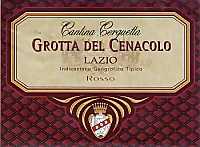
|
|
Grotta del Cenacolo 2004 |
|
| Cantina Cerquetta (Latium, Italy) | |
| Grapes: Cesanese (40%), Cabernet Sauvignon (30%), Merlot (30%) | |
| Price: € 9.00 | Score: |
| Grotta del Cenacolo shows an intense ruby red color and nuances of ruby red, moderate transparency. The nose denotes intense, clean and pleasing aromas which start with hints of black cherry, plum and blueberry followed by aromas of caper, violet, carob and vanilla. The mouth has good correspondence to the nose, a slightly tannic attack and pleasing roundness, however balanced by alcohol, good body, intense flavors. The finish is persistent with flavors of black cherry, blueberry and plum. Grotta del Cenacolo ages for 6 months in barrique followed by at least 2 months of aging in bottle. | |
| Food Match: Broiled meat and barbecue, Stewed meat with mushrooms, Hard cheese | |
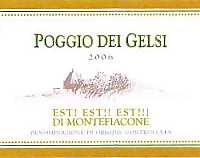
|
|
Est! Est!! Est!!! di Montefiascone Poggio dei Gelsi 2006 |
|
| Falesco (Latium, Italy) | |
| Grapes: Roscetto (40%), Trebbiano Toscano (30%), Malvasia Bianca (30%) | |
| Price: € 5.20 | Score: |
| This wine shows a pale straw yellow color and nuances of greenish yellow, very transparent. The nose denotes intense, clean and pleasing aromas that start with hints of pear, plum and almond followed by aromas of pineapple, hawthorn and apple. The mouth has good correspondence to the nose, a crisp attack and however balanced by alcohol, good body, intense flavors. The finish is persistent with flavors of apple, plum and almond. Poggio dei Gelsi ages in steel tanks. | |
| Food Match: Fish and crustacean appetizers, Pasta and risotto with fish and crustaceans | |
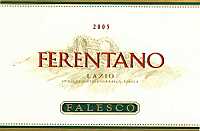
|
|
Ferentano 2005 |
|
| Falesco (Latium, Italy) | |
| Grapes: Roscetto | |
| Price: € 9.00 | Score: |
| Ferentano shows a brilliant straw yellow color and nuances of golden yellow, very transparent. The nose reveals intense, clean, pleasing and refined aromas which start with hints of apple, pineapple and pear followed by aromas of vanilla, banana, plum, praline, grapefruit and butter. The mouth has good correspondence to the nose, a crisp attack and pleasing roundness, however balanced by alcohol, good body, intense flavors. The finish is persistent with flavors of apple, plum and pineapple. Ferentano ferments and ages in barrique for 4 months. | |
| Food Match: Stuffed pasta, Roasted fish, Fish and mushroom soups, Roasted white meat | |
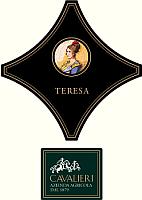
|
|
Teresa 2006 |
|
| Cavalieri (Latium, Italy) | |
| Grapes: Malvasia del Lazio, Bellone, Grechetto | |
| Price: € 6.00 | Score: |
| This wine shows a pale straw yellow color and nuances of greenish yellow, very transparent. The nose denotes intense, clean and pleasing aromas that start with hints of apple, plum and hawthorn followed by aromas of broom and pear. The mouth has good correspondence to the nose, a crisp attack and however balanced by alcohol, good body, intense flavors. The finish is pretty persistent with flavors of apple and plum. Teresa ages for 6 months in steel tanks followed by 1 month of aging in bottle. | |
| Food Match: Vegetable and crustacean appetizers, Pasta and risotto with vegetables, Dairy products | |
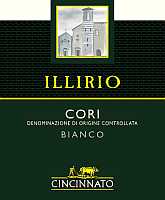
|
|
Cori Illirio 2006 |
|
| Cincinnato (Latium, Italy) | |
| Grapes: Bellone (30%), Malvasia Bianca (40%), Trebbiano Toscano (30%) | |
| Price: € 7.00 | Score: |
| This wine shows a pale golden yellow color and nuances of straw yellow, very transparent. The nose denotes intense, clean and pleasing aromas that start with hints of pear, apple and broom followed by aromas of pineapple, hawthorn, peach and anise. The mouth has good correspondence to the nose, a crisp attack and however balanced by alcohol, good body, intense flavors. The finish is persistent with flavors of apple, pear and pineapple. Cori Illirio ages in steel tanks. | |
| Food Match: Pasta and Risotto with vegetables and crustaceans, Vegetable flans, Eggs | |
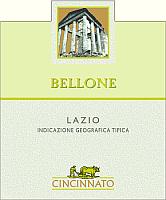
|
|
Bellone 2005 |
|
| Cincinnato (Latium, Italy) | |
| Grapes: Bellone | |
| Price: € 9.00 | Score: |
| This wine shows a brilliant golden yellow color and nuances of straw yellow, very transparent. The nose denotes intense, clean and pleasing aromas that start with hints of apple, plum and hawthorn followed by aromas of almond, ripe peach, broom and a hint of vanilla. The mouth has good correspondence to the nose, a crisp attack and pleasing roundness, however balanced by alcohol, good body, intense flavors. The finish is persistent with flavors of apple, plum and almond. This wine ferments and ages in cask. | |
| Food Match: Pasta with fish, Roasted white meat, Roasted fish, Mushroom soups | |

|
|
Porticato Bianco 2006 |
|
| Colle di Maggio (Latium, Italy) | |
| Grapes: Chardonnay, Malvasia Puntinata, Incrocio Manzoni | |
| Price: € 8.00 | Score: |
| Porticato Bianco shows a brilliant straw yellow color and nuances of greenish yellow, very transparent. The nose reveals intense, clean and pleasing aromas which start with hints of pear, apple and broom followed by aromas of pineapple, peach and hawthorn. The mouth has good correspondence to the nose, a crisp attack and however balanced by alcohol, good body, intense flavors. The finish is pretty persistent with flavors of apple, pear and pineapple. Porticato Bianco ages in steel tanks. | |
| Food Match: Vegetable soups, Vegetable and fish appetizers, Sauteed fish | |

|
|
Tulino Bianco 2006 |
|
| Colle di Maggio (Latium, Italy) | |
| Grapes: Chardonnay | |
| Price: € 13.00 | Score: |
| Tulino Bianco shows a brilliant straw yellow color and nuances of straw yellow, very transparent. The nose reveals intense, clean and pleasing aromas which start with hints of apple, pear and pineapple followed by aromas of acacia, hawthorn and plum. The mouth has good correspondence to the nose, a crisp attack and however balanced by alcohol, good body, intense flavors. The finish is persistent with flavors of plum and apple. Tulino Bianco ferments and ages in barrique for 6 months followed by 2 months of aging in bottle. | |
| Food Match: Pasta and risotto with fish and crustaceans, Stewed fish, Sauteed white meat | |
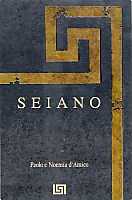
|
|
Seiano Bianco 2006 |
|
| Paolo e Noemia d'Amico (Latium, Italy) | |
| Grapes: Trebbiano Toscano (60%), Malvasia Bianca (20%), Sauvignon Blanc (15%) | |
| Price: € 7.00 | Score: |
| Seiano Bianco shows a pale straw yellow color and nuances of greenish yellow, very transparent. The nose denotes intense, clean and pleasing aromas that start with hints of pear, apple and wistaria followed by aromas of hawthorn, broom and citrus fruits. The mouth has good correspondence to the nose, a crisp attack and however balanced by alcohol, good body, intense flavors. The finish is persistent with flavors of pear, apple and citrus fruits. Seiano Bianco ages for 3 months in steel tanks. | |
| Food Match: Pasta and risotto with fish and crustaceans, Sauteed fish, Dairy products | |
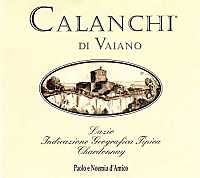
|
|
Calanchi 2006 |
|
| Paolo e Noemia d'Amico (Latium, Italy) | |
| Grapes: Chardonnay | |
| Price: € 7.00 | Score: |
| Calanchi shows a pale straw yellow color and nuances of greenish yellow, very transparent. The nose denotes intense, clean, pleasing and refined aromas that start with hints of pear, apple and pineapple followed by aromas of hazelnut, hawthorn, plum and hints of vanilla. The mouth has good correspondence to the nose, a crisp attack and however balanced by alcohol, good body, intense flavors. The finish is persistent with flavors of apple, pineapple and hazelnut. A small part of this wine ages in barrique for 3 months. | |
| Food Match: Fried fish, Stewed fish, Roasted fish, Roasted white meat | |
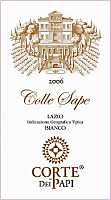
|
|
Colle Sape 2006 |
|
| Colletonno (Latium, Italy) | |
| Grapes: Malvasia Bianca, Trebbiano Toscano, Chardonnay | |
| Price: € 8.50 | Score: |
| The wine shows a pale straw yellow color and nuances of greenish yellow, very transparent. The nose reveals intense, clean and pleasing aromas that start with hints of citrus fruits, apple and plum followed by aromas of hawthorn, almond and pear. The mouth has good correspondence to the nose, a crisp attack and however balanced by alcohol, good body, intense flavors. The finish is persistent with flavors of apple, plum and almond. Colle Sape ages in steel tanks. | |
| Food Match: Fried fish, Pasta and risotto with fish, Sauteed white meat, Sauteed fish | |
News |
|
In this section are published news and information about events concerning the world of wine and food. Whoever is interested in publishing this kind of information can send us a mail to our address.
|
Making Wine: BottlingAfter the aging, wine is now ready for the last part of its journey which, from cask, passing through a bottle, will take it to be poured in glasses |
|
Bottling can be defined as the last phase of the wine making process, indeed it represents the beginning of a new one, during which the evolution and development of wine continues and will end at the moment of consumption, that is when the bottle will be uncorked and finally poured on glasses. In its apparent simplicity, bottling of wine represents an extremely critical and delicate phase because, after having sealed the bottle with a cork, in theory it will not be possible to work on the quality and stability of wine. In fact, during the aging of wine in a cask - or in any other container - in case there would be any problem or fault, it will be possible to work on that by adopting proper measures and corrections, something which is not evidently possible when the wine has been bottled and, in case of industrial making, it left the winery to the routes of commercialization.
If it is true nothing can be done on the wine after the bottle has been sealed, it is also true we can arrange things in order to make sure the wine will be bottled in its best possible conditions. For this reason it is absolutely important to test the stability and health of wine before proceeding with bottling. Likewise, it will be indispensable to ensure the best conditions both for bottles and corks. It is superfluous to remind a non perfectly clean bottle can represent a menace for the keeping and the evolution of wine, as the presence of any bacteria can easily spoil the wine. Also the storage and keeping of bottles requires proper precautions and conditions, also reminding in case natural corks are being used - because of a bad keeping, as well as of a bad quality of the cork itself - they could lose their elasticity or they could give the wine bad smells or faults.
|
||||||||
|
Before proceeding with the bottling of wine, it is very important to make sure about its stability and health, in order to adopt all the necessary remedies before it is too late. In industrial production, before proceeding with the bottling of wine, are done many chemical tests in order to check total and volatile acidity, total and free sulphur dioxide, quantity of iron, copper, proteins, bacteria and yeast cells. All of these factors are in fact important for the keeping and biological stability of wine, however in home wine making, the evaluation of these parameters is not possible or however not easy. In home wine making, the most simple procedure which can be done on wine before bottling, is to add a proper quantity of sulphur dioxide, in order to limit the unavoidable effects of oxygen while ensuring a better keeping. In order to reduce the quantity of iron, copper, proteins and any yeast cell, it is generally done a filtering of wine, however this operation is not usually possible or however easy to do in home wine making. Despite in specialized shops are available special machines for the filtering of wine, their use in home wine making is not so practical and convenient. The most simple operation which can be done in home wine making - also done industrially - it to do proper rackings during the aging of wine and before bottling. This operation is in fact essential for the removal of sediments which are naturally formed during the aging, while ensuring a better stability of the wine which will also make it perfectly limpid. We will proceed with a racking also before bottling in order to remove any possible sediment, therefore we will proceed with a proper adding of sulphur dioxide, in the measure of 5-10 grams of potassium metabisulfite for every one hundred liters of wine.
|
|
Although this could be seen as excessive, the choice of bottles and corks is a factor representing a fundamental step in bottling. In particular the cork, as its quality and health ensure a better keeping over the time and, in particular, a lesser risk against the spoilage of wine. One of the most frequent risks is represented by the famous “corky smell”, caused by a chemical compound known as 2,4,6-trichloroanisole, 246-TCA in short. According to the type of wine to be produced, we will proceed with a proper choice of corks. For red wines destined to a long time of aging in bottle, choosing a high quality natural cork is indispensable. We will choose a high quality natural cork - made of just one whole piece of cork - with a minimum length of 45 millimeters. For white wines, or however wines whose consumption is done within some months after harvesting, a good choice is represented by the so called synthetic corks, which, among the other things, never cause corky smell fault. Another solution is represented by agglomerated corks - which can also be used for red wines of average aging - which also have the advantage of being cheaper, however having a lower quality than one-piece corks. In any case, no matter the type of cork chosen, it is advised to use corks having a minimum length of 45 millimeters. Also the choice of the bottle must be done carefully. Besides the considerations about traditions, that is in all those cases in which a territory identifies its wines also by the shape of the bottle, it should be noticed every bottle has its own characteristics. As for red wines destined to a long aging, and which could produce a remarkable quantity of sediments, it is indispensable to use a bottle with a pretty steep shoulder, such as the Bordelais bottle. The shoulder of this bottle offers in fact a useful barrier at the moment of pouring, by keeping any possible sediment. Bordelais bottles can also be used for white wines, however it is best to use Burgundy or flute bottles. The color of the glass is very important, as it offers an essential protection against the effects of light. For this reason it is best to choose bottles with dark green or brown colored glass.
|
||||
|
Hygiene is a fundamental requirement in any phase of wine making. Although Louis Pasteur defined wine as «the most healthy and hygienic of beverages», this does not mean the hygiene in wine making is naturally present: it is a specific condition provided by the producer. Particular care must be paid on the hygiene of bottles, as they could easily spoil the wine. Before proceeding with the bottling, we will begin by cleaning bottles. In home wine making can certainly be used recycled old wine bottles, provided they are scrupulously cleaned. Recycling wine bottles, besides representing a good operation of material recycling, also allows a remarkable saving of money because it avoids the purchase of new ones. The same cannot evidently be said for corks, because as soon as they are used, they cannot be reused also because - and in particular - of the hole produced by the corkscrew during the uncorking of the bottle. The cleaning of bottles can be done by using specific products available at specialized wine making shops, or by using a solution made of water and potassium metabisulfite, therefore allowing the bottle to completely drain. The same solution will be used for cleaning pipes, siphons, carafes and any other tool used for the bottling of wine. For cleaning the bottles - an operation which should be done also on new bottles - it is enough to dissolve 3-4 tea spoons of potassium metabisulfite for every liter of water. With this solution will be carefully rinsed all the bottles and all the tools used for bottling. Also the corker must be clean, at least the parts which will be in contact with the neck of bottles. Before beginning bottling operations and bottle filling, it will also be useful a final organoleptic test on wine, in order to make sure about its quality after the racking.
|
|
Racked wine and clean bottles: now everything is ready and we can proceed with the operation of bottling. Before proceeding, we also have to make sure we have everything at hand, in particular the corker and corks. The operation of bottling can be done by using a siphon with which we will transfer the wine from the keeping container to bottles, or - for small quantities - by using a carafe. In specialized wine making shops are also available many types of siphons to be used for bottling: from simple pipes to siphons with manual taps to interrupt the flowing of wine, as well as with automatic devices which can regulate the level of wine in every bottle. All of these solutions are very cheap, therefore it is better to purchase a siphon with an automatic leveling device, in order to ensure the same quantity of wine - as well as the same quantity of air - in every bottle. The quantity of air left between the wine and cork represents a very important factor in bottling. As it is commonly known, oxygen - when present in remarkable quantities - is considered as an enemy of wine, as it causes unhealthy oxidations with the consequent spoilage both of stability and and organoleptic qualities of wine. In leaving the proper space of air, it should also be considered the length of the cork in order not to excessively fill bottles. However, it is always suggested the distance between the wine and the cork not to be longer than one centimeter. It should also be remembered in wines allowed to age in bottle for a long time - usually many years - the level could also diminish, therefore in filling the bottles we should also consider this aspect. After having filled the bottles to the proper level, we will proceed with corking and, if wished, to put a capsule to the bottle. Capsules are available at specialized wine making shops and ensure a higher hygiene both of the bottle's neck and cork.
|
|
After having bottled the wine and corked the bottles, it is now the time of storing and keeping bottles. Before transferring the bottles to the keeping room, it is a good practice to put labels in order to keep track of our wine and have a better information about the content. Of course, labels can be created according to the taste and fantasy of the producer, however it is suggested to at least write some essential information, including the name of the wine, type, vintage and, if possible, the grapes used to make it as well as their relative percentages. Other useful information are the date of bottling and the number of bottles obtained in that occasion. In order to ensure a better keeping of the wine, it is essential the room in which are being stored the bottle provides the right conditions for this purpose. In home wine making it is not always possible to have a room to be used as a cellar, therefore we will arrange things in the best possible room while accepting some compromises, while however trying to provide the best possible conditions. We will choose a pretty dark room - even better, completely dark - sufficiently aerated in order to prevent the development of unwanted molds, with a temperature of about 15° C (59° F), possibly constant all year long, and with a humidity of 60-70%. It is important the temperature to be as much constant as possible and never going down 15° C, as lower temperatures favor the precipitation of tartrates and sedimentation. Bottles destined to an immediate consumption - that is within few months after bottling - can also be kept in vertical position, whereas for wines destined to long period of aging, it is indispensable the bottle is kept in horizontal position. The contact with the wine in fact ensures a better elasticity to the cork while avoiding dangerous shrinkage which could favor the entering of oxygen inside the bottle. Before consuming the wine, it is better to wait at least one month, even better, two months. This time will in fact allow the wine to refine and to stabilize even more, while favoring a better integration of the sulphur dioxide used for the racking.
|
Wine Parade |
|
|
| The best 15 wines according to DiWineTaste's readers. To express your best three wines send us an E-mail or fill in the form available at our WEB site. |
| Rank | Wine, Producer | |
|---|---|---|
| 1 |
| Soave Classico Monte Alto 2004, Ca' Rugate (Italy) |
| 2 |
| Sforzato di Valtellina Canua 2001, Conti Sertoli Salis (Italy) |
| 3 |
| Sagrantino di Montefalco Collepiano 2003, Arnaldo Caprai (Italy) |
| 4 |
| Barolo Cannubi Boschis 2001, Sandrone (Italy) |
| 5 |
| Amarone della Valpolicella Classico Costasera 2001, Masi (Italy) |
| 6 |
| Amarone della Valpolicella Classico 2000, Zenato (Italy) |
| 7 |
| Barolo Bussia 2001, Prunotto (Italy) |
| 8 |
| Don Antonio 2003, Morgante (Italy) |
| 9 |
| Collio Bianco Col Disôre 2004, Russiz Superiore (Italy) |
| 10 |
| Nero al Tondo 2001, Ruffino (Italy) |
| 11 |
| San Leonardo 2001, Tenuta San Leonardo (Italy) |
| 12 |
| Mater Matuta 2003, Casale del Giglio (Italy) |
| 13 |
| Bradisismo 2003, Inama (Italy) |
| 14 |
| Chianti Classico Riserva Novecento 2000, Dievole (Italy) |
| 15 |
| Wine Obsession 2001, Vignamaggio (Italy) |
| |||||||
Privacy Policy | |||||||


| Copyright © 2002-2024 Antonello Biancalana, DiWineTaste - All rights reserved |
| All rights reserved under international copyright conventions. No part of this publication and of this WEB site may be
reproduced or utilized in any form or by any means, electronic or mechanical, without permission in writing from DiWineTaste. |